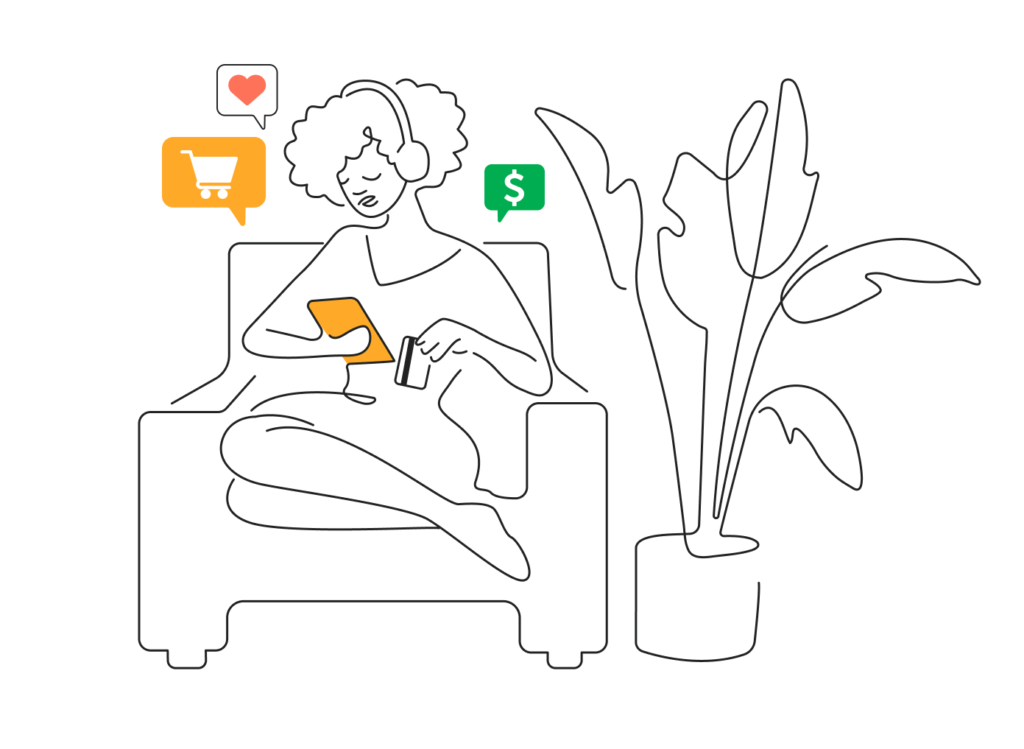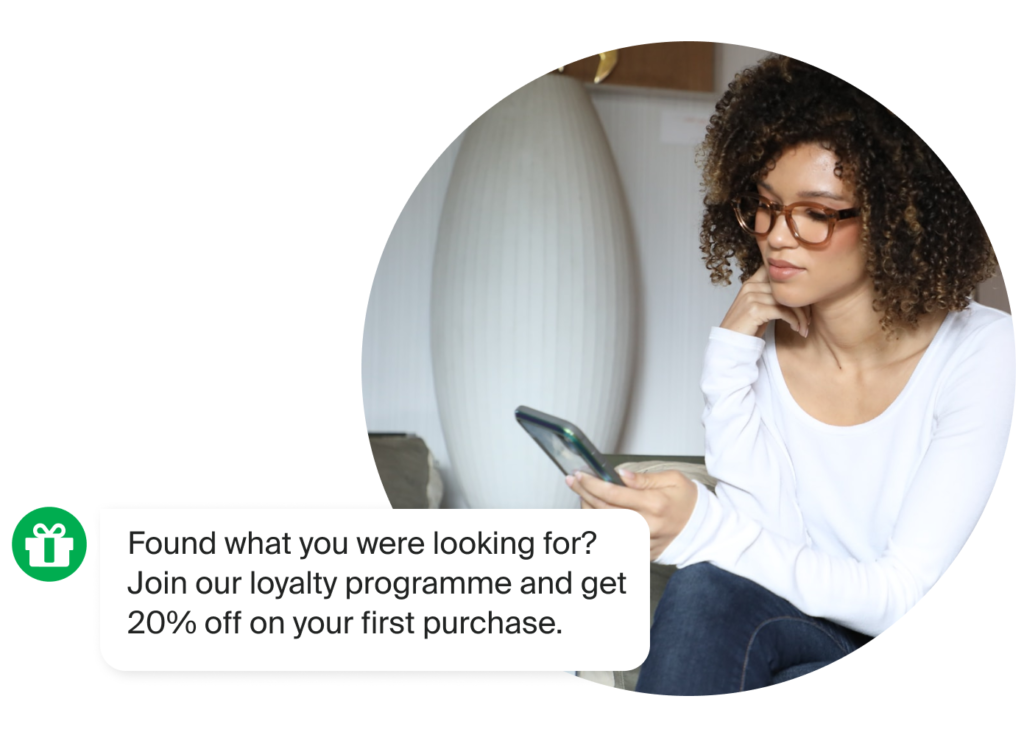From Crisis to Coping
In the wake of the current cost-of-living crisis, one of the top priorities for retail or eCommerce businesses is providing support to their customers while still making a decent profit. To successfully address the challenge, they need to understand the unique circumstances from which consumers’ current cut-back mentality has arisen.
What Makes This Crisis Unique?
The first factor is the aftermath of the COVID-19 lockdowns, which have had a lasting effect on shopping habits, driving customers online long-term and reducing brand loyalty in favour of speed, overall cost, availability, and efficiency. Other factors include the stagnant wages Europe-wide coupled with rising inflation. Recent McKinsey research shows that 43% of European consumers are pessimistic about the economic recovery and that rising prices are a top concern for 58% of them. The upshot is that around 7 in 10 are spending less on non-essentials.

Now the Good News
On the upside, 90% of consumers across Europe are resiliently adopting coping strategies that shape their buying behaviour. Retail and eCommerce businesses can analyse these to inform business, sales, and marketing initiatives, get ahead of the competition, and turn a profit. It’s clear businesses are looking to their Marketing departments for solutions, as 59% of marketing budgets rose in 2022, and 53% of marketers expected a further increase in 2023.
Price, Brand, Delivery
Top purchasing drivers across all consumer generations are price, brand and a great delivery experience. Expanding on these, consumers are not just concerned with how much they pay but also with a range of ways to pay. Great delivery means free and fast and, in this economy, should include an excellent returns strategy.
Cost-of-Living Personas
There are broadly four types of consumer persona emerging.
- 14% are “financially immune” meaning that they have financial security and aren’t concerned.
- 25% are “comfortable cautious”, enjoying some financial security but still worried. Accordingly, they’re looking for value at the right price, favouring high-end private labels.
- 25% are “squeezed spenders”: emotionally resilient but juggling their diminishing budgets and relying on an array of finance and payment options for both essentials and the fun things in life.
- The largest group, at 36%, are “financially distressed”. They’re extremely stressed and focused on comparing and buying essentials at the lowest possible price from quality budget private labels.
This provides a broad basis for initial segmentation of your customers, before drilling down on your own more granular data and the trends discussed below.
Brand Positioning

Can Consumers Find You?
Most 18-24 year olds and over 45s start their searches on marketplace’s like Amazon and eBay, whereas consumers aged 25-44 are more likely to use a search engine for inspiration. So, it would be prudent to examine the pros and cons of creating a store on one of the top marketplaces and get your Google ads up to scratch. Interestingly this is one of the few areas where historical data still rings true as, in previous times of economic crisis, brands that increased their ad share gained an additional 12% market share. If you’re concerned about brand dilution, ensure your marketplace shop front is properly branded, maintain your tone of voice in your product descriptions, and strive for this brand consistency across all your channels.
Put Your Oxygen Mask on First
Change starts from within so, if you want consumers to view your brand as caring, trustworthy and supportive, start by formulating initiatives that help your staff manage the cost-of-living crisis. Take inspiration from London businesses who are providing flexible working (34%), mental health counselling (18%), supermarket vouchers (17%), free or subsidised food (15 %) and discounted travel (14%). Meanwhile, Aldi and Amazon have given staff pay increases. Consumers will appreciate that you’re an ethical brand that looks after your employees. Your sales, marketing and customer service employees will be much better placed to market your brand as a solution to the crisis if they feel seen, heard, and valued. Create brand awareness campaigns with photos, quotes and feedback from your staff about your internal efforts, alongside your customer cost-of-living marketing campaigns.
Reputation Management
Simplifying the rules and eligibility of your payment, price and other initiatives and clearly communicating their value is the best way to make customers feel empowered and foster brand trust.
DOs:
- Stay true to your brand’s purpose and voice both in terms of the cost-of-living initiatives you choose, and the way you communicate them.
- Make sure that offers and initiatives like BNPL allow for a reasonable amount of time for repayment so you aren’t putting customers in an even worse position.
DON’Ts:
- Don’t overstate the value, reach or impact of your initiatives by declaring them as a complete solution for customers, be realistic to foster trust.
- Don’t be afraid to use humour in your marketing messages as consumers are drawn to brands that understand the problem but keep their communications on the (tasteful) light side.
Pricing & Payment Strategy
Dynamic Pricing Pays Off
Whilst price is a key factor influencing 74% of consumers, cutting costs across your entire eCommerce product range isn’t the answer. Consumers’ top three pricing concerns are that stores keep prices fair, provide “value for money” propositions and freeze prices on value-range products.
Dynamic pricing can boost revenue, improve inventory management and strengthen customer relationships, giving you important customer data to shape your strategy to changing trends.
You don’t want your customers to feel confused or exploited, so build trust with clarity, transparency, and personalisation. Using multimedia business messaging you can alert your customer to a price drop on a selection of their favourite items with a call to action to visit your website or local store. Provide a reminder, pre-checkout, by physically placing discounted items by the counter in-store and using images online. Increase your Average Order Value by cross-selling bundled offers, upselling your luxury range, or down-selling to a value range to prevent cart abandonment. For retailers who don’t already have private label ranges, this is a good time to investigate forming a white label partnership.

Payment Options
Over 70% of Buy Now Pay Later users are relying on this type of payment option, so offer a range like Apple Pay BNPL, Sezzle, and Amazon Pay. When all stores are price-slashing, these manageable, interest-free plans can give you a competitive edge, so highlight them in your marketing. For 44% of consumers, coupons are a major factor in brand selection and for 35% a loyalty scheme price is the biggest draw.
Delivery & Returns Experience
Decent Delivery
Shoppers don’t want to pay for delivery but the shipping costs are at an all-time high, soaring by 547% for some routes. If you can’t afford to make your shipping free for all, offer it to your loyalty card members only. If you have a bricks and mortar store, offer free Click and Collect. This accounts for an impressive 40% of retail sales amongst stores that use it. To ensure on-time delivery consider a multi-carrier shipping solution. For expert advice on how to craft communications for a better delivery CX, check out our article on optimising sales touchpoints.
Righteous Returns
62% of shoppers would stop buying from a brand after a poor return experience and 59% would buy more following a good one. Returns are sky-high and stores like BooHoo and Zara are charging customers for them. It’s a mistake as 56% of shoppers would be hesitant to buy from a brand that operates this policy. If covering reverse logistics costs is too onerous, consider offering a free drop-off in store service and immediate refunds for postal returns.
Another driver of paid returns has been the exponential rise in fraud. Encouraging returns in-store can assuage this as fraudsters won’t want face-to-face interaction. Making your return forms more detailed, educating employees, and requiring photo id are good ways to safeguard your business without passing on costs to customers.
Now you have a little more insight into consumers’ state of mind, you can use the information, tips and ideas in this article to redefine your customers’ cost-of-living crisis personas and analyse your own data with these preferences and benchmarks in mind to create a winning strategy.

